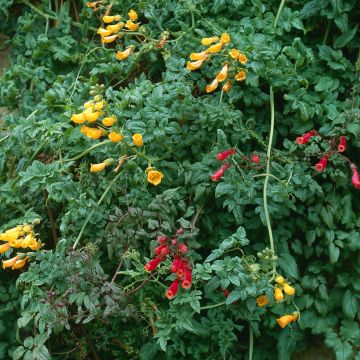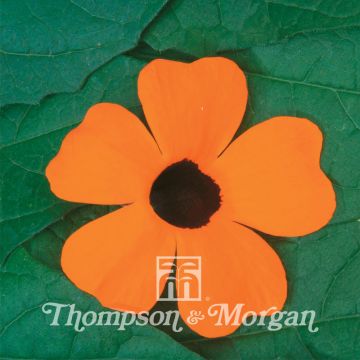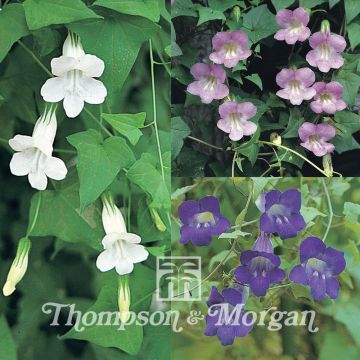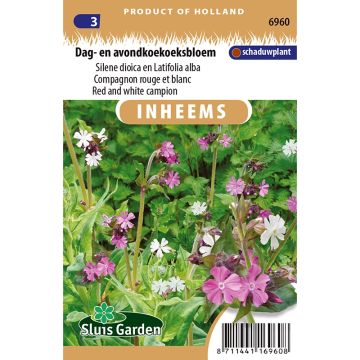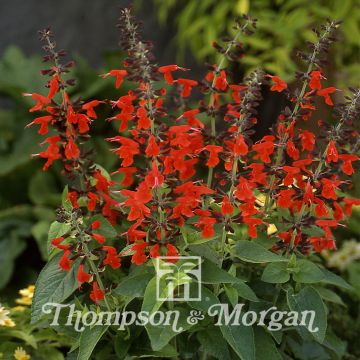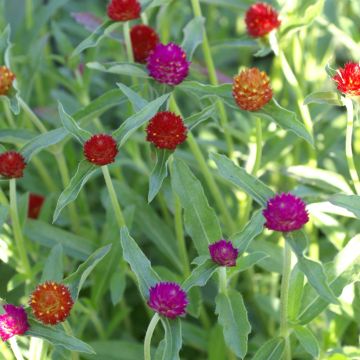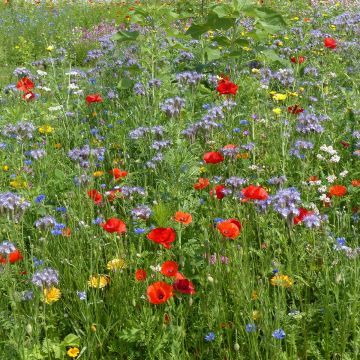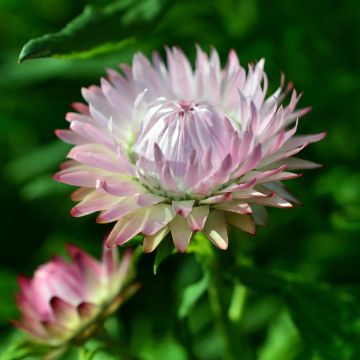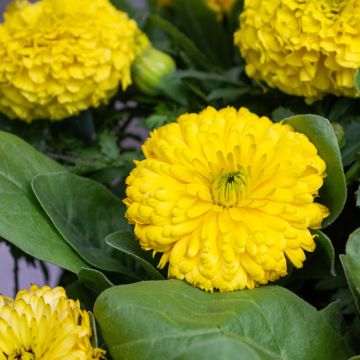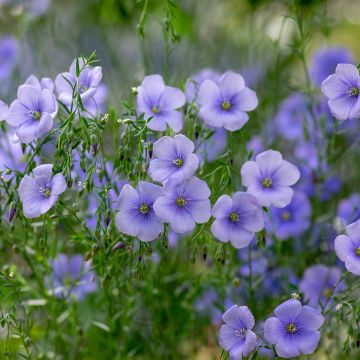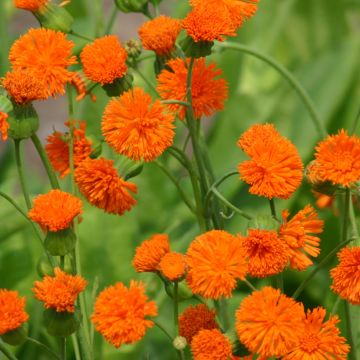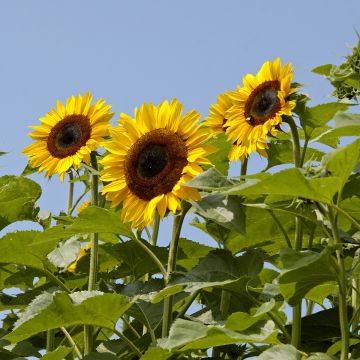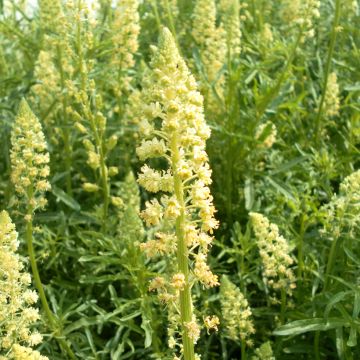

China aster Milady Mix Seeds
China aster Milady Mix Seeds
Callistephus chinensis Milady Mixed
China aster
Beautiful young plant but late flowering and especially extremely susceptible to diseases!! The plants were decimated from the beginning of September and it was necessary to uproot them all. Disappointed with the habit of this plant.
Philippe, 01/10/2019
This item cannot be shipped to the selected country
Dispatch by letter from €3.90
More information
Dispatch by letter from €3.90
More information
Schedule delivery date,
and select date in basket
This plant carries a 6 months recovery warranty
More information
We guarantee the quality of our plants for a full growing cycle, and will replace at our expense any plant that fails to recover under normal climatic and planting conditions.
Seed-only orders are dispatched by sealed envelope. The delivery charge for seed-only orders is €3.90.

Does this plant fit my garden?
Set up your Plantfit profile →
Description
Aster Milady Mixed is a fast-growing annual plant with well-branched, erect stems and a bushy habit that is native to China. Its latin name is Callistephus chinensis Milady Mixed.
The flowers are 8 to 10 cm wide, solitary pseudanthia that are made up of curved ray flowers, giving it the appearance of certain Chrysanthemum or certain peonies. The blend of colours is harmonious : blue, pink, reddish pink, white. The long vase life of its floral stems makes it ideal for the arrangement of colourful bouquets.
Its sturdy, branched stems form a small bush that measures 45-60 cm high and 30 cm wide. Its oval, slightly toothed, dark green leaves are alternate.
In its natural habitat, the China aster contents itself with wastelands and uncultivated rocky slopes.
It is an easy growing plant that is perfect for flower beds and container displays, provided care is taken to plant it in rich, well-drained soil. If the plant is not sheltered from strong winds, be sure to stake its flowering stems.
Flowering
Foliage
Plant habit
Botanical data
Callistephus
chinensis
Milady Mixed
Asteraceae
China aster
China
Other Thompson and Morgan seeds
Planting and care
Sow Aster Milady Mix from March to April in a seed tray. Use good quality soil. Lightly tamp down the surface of the tray before broadcasting your seeds. Do not cover the seeds, but water generously with a very fine spray. Place your tray in the light, without direct sunlight, at a temperature of 20°c to 30°c. Lower the temperature at night to 15°c to create a beneficial alternation for germination.
Seed emergence will take from 7 to 21 days. As soon as the seedlings can be handled, transplant them into 7 cm pots. Then 15 days before planting them in their final positions, start to acclimatize them gradually to a temperature of 15 °C.
By mid May, the temperature in the garden will be warm enough to plant out your young plants. Choose a site with plenty of sunshine and well-drained soil. Add a shovel of compost to each planting hole. Space your plants 30 cm apart.
Regularly remove faded flowers to maintain the plant's beauty and encourage bloom renewal.
Fusarium and powdery mildew are the diseases frequently encountered on China aster. To avoid them as much as possible, do not water the foliage and plant Callistephus chinensis in well-drained soil. Avoid growing China aster in the same place every year. Buy new seeds instead of harvesting those from the flowers in your garden.
Watch out for aphids.
Sowing period
Intended location
-
, onOrder confirmed
Reply from on Promesse de fleurs
Flower seeds
Haven't found what you were looking for?
Hardiness is the lowest winter temperature a plant can endure without suffering serious damage or even dying. However, hardiness is affected by location (a sheltered area, such as a patio), protection (winter cover) and soil type (hardiness is improved by well-drained soil).

Photo Sharing Terms & Conditions
In order to encourage gardeners to interact and share their experiences, Promesse de fleurs offers various media enabling content to be uploaded onto its Site - in particular via the ‘Photo sharing’ module.
The User agrees to refrain from:
- Posting any content that is illegal, prejudicial, insulting, racist, inciteful to hatred, revisionist, contrary to public decency, that infringes on privacy or on the privacy rights of third parties, in particular the publicity rights of persons and goods, intellectual property rights, or the right to privacy.
- Submitting content on behalf of a third party;
- Impersonate the identity of a third party and/or publish any personal information about a third party;
In general, the User undertakes to refrain from any unethical behaviour.
All Content (in particular text, comments, files, images, photos, videos, creative works, etc.), which may be subject to property or intellectual property rights, image or other private rights, shall remain the property of the User, subject to the limited rights granted by the terms of the licence granted by Promesse de fleurs as stated below. Users are at liberty to publish or not to publish such Content on the Site, notably via the ‘Photo Sharing’ facility, and accept that this Content shall be made public and freely accessible, notably on the Internet.
Users further acknowledge, undertake to have ,and guarantee that they hold all necessary rights and permissions to publish such material on the Site, in particular with regard to the legislation in force pertaining to any privacy, property, intellectual property, image, or contractual rights, or rights of any other nature. By publishing such Content on the Site, Users acknowledge accepting full liability as publishers of the Content within the meaning of the law, and grant Promesse de fleurs, free of charge, an inclusive, worldwide licence for the said Content for the entire duration of its publication, including all reproduction, representation, up/downloading, displaying, performing, transmission, and storage rights.
Users also grant permission for their name to be linked to the Content and accept that this link may not always be made available.
By engaging in posting material, Users consent to their Content becoming automatically accessible on the Internet, in particular on other sites and/or blogs and/or web pages of the Promesse de fleurs site, including in particular social pages and the Promesse de fleurs catalogue.
Users may secure the removal of entrusted content free of charge by issuing a simple request via our contact form.

































